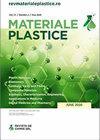Preliminary Hybrid Joint Analysis for Aircraft Structures
IF 0.6
4区 材料科学
Q4 MATERIALS SCIENCE, MULTIDISCIPLINARY
引用次数: 0
Abstract
Metal-composite joints, or hybrid joints are prevalent in aerospace structures due to their high strength and low weight. Such structures are usually found in areas where because of the load configuration, the use of composite materials is possible. Thereby, the analysis of such areas needs to consider both components, the metallic and the composite part. In this paper a hybrid joint is analyzed, consisting of a metallic stiffener, a multilayered honeycomb composite material, and joining fasteners, which constitute the joint between the isotropic and orthotropic materials. The present article has two main purposes: the first is to illustrate a pre-design procedure aimed to evaluate the load-carrying capability of a hybrid joint structure, thereby giving an estimate if the structure can withstand the given loading conditions; the second purpose is to present two types of finite element modeling techniques, one that captures the real geometric structure of the composite material and another which uses a simplified equivalent model, based on the desired level of evaluation of the composite material part. A comparison between the two models is made, highlighting the advantages and disadvantages of the two forms of evaluations. For the metallic parts - stiffener and fasteners, both static and fatigue analyses were performed, as fatigue failure represents the common service failure mode for this type of structural components.飞机结构的初步混合接头分析
金属复合材料接头或混合接头因其强度高、重量轻而在航空航天结构中十分普遍。由于负载配置的原因,此类结构通常出现在可以使用复合材料的区域。因此,对这类区域的分析需要同时考虑金属和复合材料两个部分。本文分析了一种混合连接,它由金属加劲件、多层蜂窝复合材料和连接紧固件组成,构成了各向同性材料和正交材料之间的连接。本文有两个主要目的:第一个目的是说明一种预设计程序,旨在评估混合连接结构的承载能力,从而估计该结构能否承受给定的载荷条件;第二个目的是介绍两种有限元建模技术,一种是捕捉复合材料的真实几何结构,另一种是根据复合材料部分的预期评估水平,使用简化的等效模型。对这两种模型进行了比较,强调了两种评估形式的优缺点。对于金属部件--加强筋和紧固件--进行了静态和疲劳分析,因为疲劳失效是这类结构部件的常见失效模式。
本文章由计算机程序翻译,如有差异,请以英文原文为准。
求助全文
约1分钟内获得全文
求助全文
来源期刊

Materiale Plastice
MATERIALS SCIENCE, MULTIDISCIPLINARY-
CiteScore
1.40
自引率
25.00%
发文量
99
审稿时长
6-12 weeks
期刊介绍:
Materiale Plastice, abbreviated as Mater. Plast., publishes original scientific papers or guest reviews on topics of great interest.
The Journal does not publish memos, technical reports or non-original papers (that are a compiling of literature data) or papers that have been already published in other national or foreign Journal.
 求助内容:
求助内容: 应助结果提醒方式:
应助结果提醒方式:


